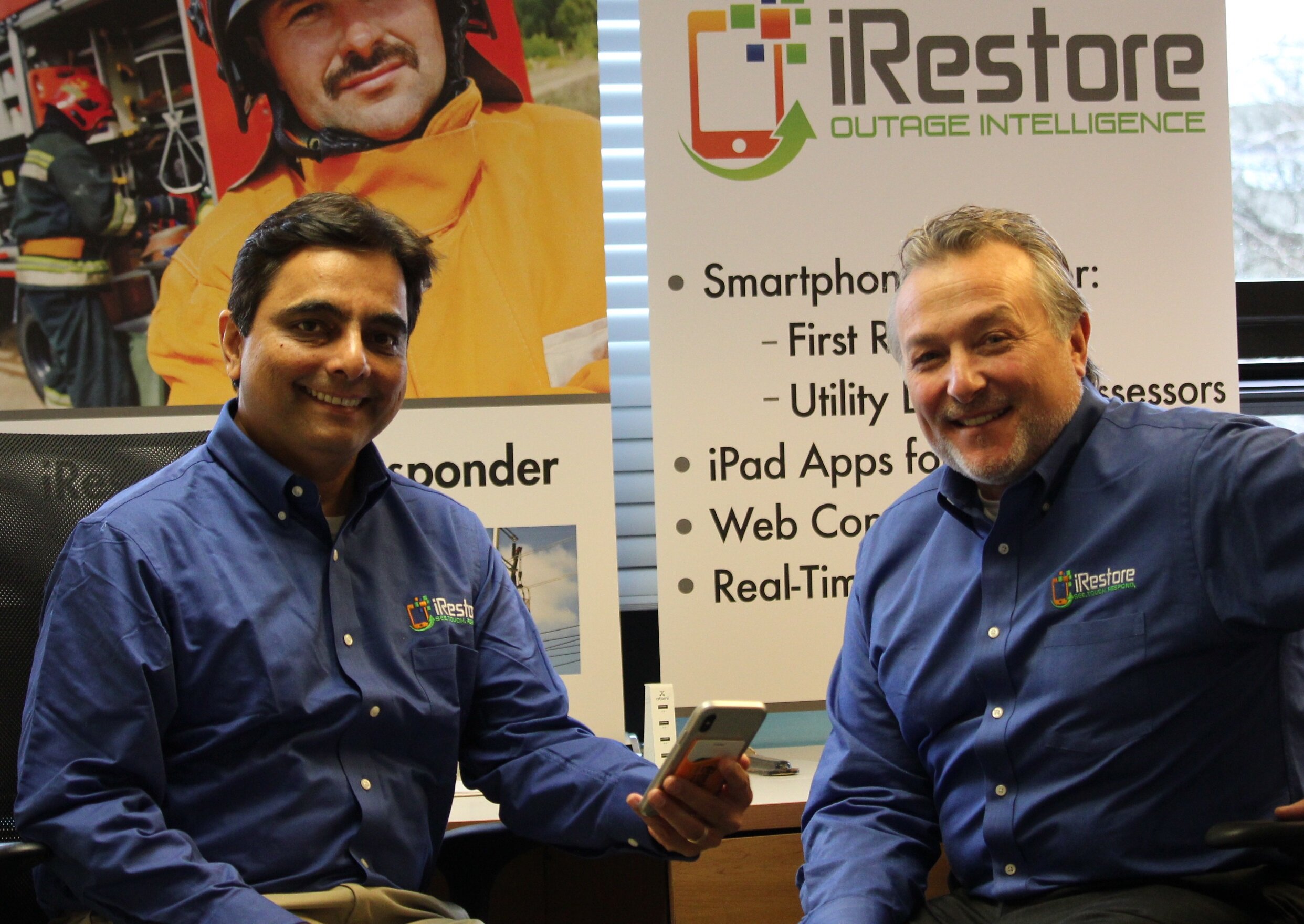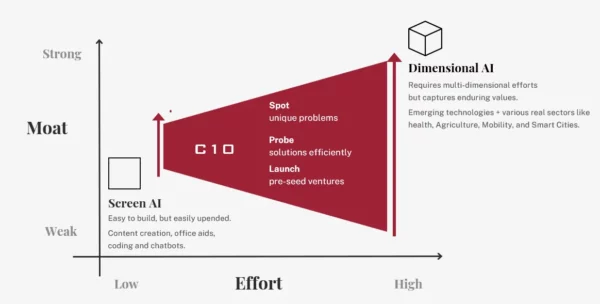How CIC clients Manage Successful Remote Teams
In February 2013, Yahoo CEO Marissa Mayer called all her remote employees back to the office. If Yahoo couldn’t make it work, some wondered, how could other companies expect to do better? Fortunately, remote work has only increased since then. Remote and freelance workers are expected to reach 50% of the workforce by 2027.
Not only does working remotely eliminate daily or long-distance commutes—reducing air pollution, stress, and transportation expenses–it also benefits employers. These benefits include increased productivity, retention, and cost savings.
iRestore, a utility app company at Cambridge Innovation Center’s Massachusetts location, utilized remote teamwork to successfully market and scale its products. Its remote teams include a management team, an advisory board, the board of directors, development and design teams, and the website and SEO company.
iRestore founder and CEO Deepak Swamy credits remote work processes for the company’s success. “Remote teams are in iRestore’s DNA,” Swamy says. “iRestore’s customer base has expanded beyond its early blue-chip customers in the northeast to California with expansion across the border to Canada expected in the new year.”
iRestore founder and CEO Deepak Swamy and EVP Michael Haeflich have worked extensively with remote teams, enabling the company to bring products to market and scale. They have spent the last 5 years creating a unique enterprise mobile platform and app suite for gas and electric utilities.
For some, it may seem difficult to duplicate Swamy’s success with distributed teams. How do you supervise employees when they aren’t physically present? How can you build a work culture when people don’t work at the same office? Although these challenges require a different management style, innovative remote team management strategies can help distributed teams thrive and grow.
The Right Tools for Managing a Team in Different Locations
For successful remote communication, a distributed team needs the same tools as an in-office team and a few more. Besides everyday office tools, a remote team needs additional ways to communicate.
When your team works collaboratively, task, file, and collaboration management software can help you keep your team organized. Video conferencing adds a visual element to team communication, which is ideal for training, group meetings, or retreats. If you’re looking for ideas, this list of remote team tools can help you get started.
CIC team members around the world meet remotely using BlueJeans software.
At CIC, with team members distributed across the United States (US) in Cambridge and Boston, Massachusetts (MA), Philadelphia, Pennsylvania (PA), St. Louis, Missouri (MO), Miami, Florida (FL), and Providence, Rhode Island (RI), as well as internationally in Rotterdam, the Netherlands (NL), Warsaw, Poland (PL), and Tokyo, Japan (JP), many staffers use tools such as Whereby and Asana to connect with each other.
Marcelo Salup, a CIC Miami client, uses tools such as Zoom for video conferencing, and encourages traveling for in-person meetings when possible.
Melissa Lamarre, founder of Workaholix Brands and Mel’s Butter Blends at CIC Philadelphia, uses live documents to manage remote work.
According to Marcelo Salup, a current CIC Miami client who has experience managing teams located from 7 to 34 countries, the best tool is “American Airlines; the second best tool is weekly video conferencing meetings” if he can’t hop on a plane to meet remote team members in person.
iRestore prefers Office 365 for email and calendars, Zoom for online collaboration, Slack for chat, and Salesforce for tracking customer relationships.
Melissa Lamarre, founder of Workaholix Brands at CIC Philadelphia, prefers live documents on an SaaS platform and video calls to help monitor activities. “Documentation and spreadsheets are essential to track tasks and their completion,” she says. By managing work remotely, Melissa has also launched Mel’s Butter Blends, a natural personal care and lifestyle brand that promotes natural wellness through clean beauty and instructional content. Her company creates natural products for full-body use, made primarily from aloe and mango butter that provide natural solutions to common hair and skin issues, such as eczema and alopecia.
Sardar Asimov, Managing Director of Skief Consulting at CIC Miami, uses regular alignment calls for clarity on tasks, deadlines, and deliveries.
Sardar Azimov, Managing Director of Skief Consulting at CIC Miami, uses different communication tools, depending on the purpose of the message. These include instant messaging, shared internal reporting, and regular alignment calls for clarity on tasks, deadlines, and deliveries.
Whatever tools you choose, it’s important to establish multiple channels of communication and regular interactions with team members.
Remote Office Rules
The best time to set clear expectations is before an employee is hired. Ideally, you’ll ask questions during interviews to determine if the candidate can communicate well and work independently.
Once hired, it’s important to establish a clear set of rules. Where possible, send instructions to your employees in writing so you are both protected from misunderstandings. These may include policies, hours of availability (especially important across time zones), remote office or equipment requirements, in-person meetings, HR information, task requirements, deadlines, and more.
Cultivating Remote Accountability with Distributed Teams
The days when the boss praised the last employee to leave the office are gone. As a manager, you have better ways to determine if employees use their time productively.
First, trust your employees to do their work even if you’re not there to supervise. A manager’s trust is significantly linked to an organization’s financial performance. Independence and self-responsibility can help your team members succeed.
Second, keep employees accountable by checking in. Even if your employees set their own deadlines, regular check-ins can help you stay informed about your employees and their work. Consistent meetings help teams build rapport and proactively address issues.
Third, open the communication channels. Let your employees know when and how they can contact you with questions or concerns. That way, you can discover problems early in the process before they become disasters. Set the example for your team by openly sharing your concerns and successes so they feel free to discuss their own.
Managing Remote Team Relationships for a Strong Work Culture
Personal relationships and company culture are vital ingredients for success. People with good work relationships are more engaged in their work. Even when you lack in-office conversation, it’s important to facilitate working relationships within your team.
Talking about your company and team mission can help your team members identify with the organization and build a sense of shared values. If you hold in-person trainings, meetings, or retreats, you have a prime opportunity to share your why and help employees become motivated around a sense of purpose. iRestore maintains an office because Swamy believes in creating a balance between working from home and a work location. “This makes it possible to collaborate with colleagues or host customers,” he says.
In-person meetings may not be possible for everyone, but you can accomplish similar purposes through video conferencing. Remember to accommodate different time zones and holidays for multicultural teams. Also, keep in mind language variances and distinct communication styles.
Susan Vong, owner of Poxy Clinical at CIC Cambridge, provides UAT Plan development, project management, and consulting services to Sponsors leveraging IRT software to support their clinical trials.
Susan Vong, owner of Poxy Clinical in Cambridge, Massachusetts says: “If I have a meeting with a large international team, I will prepare for it by setting up shorter (no longer than 30-minute) meetings with individuals to vet and align thoughts prior to jumping on a call with a large team. Not only does this give me early insight to concerns and preparation for the meeting, but I also get the opportunity to connect on an individual and interpersonal level with the team member.” She recommends establishing routine check-ins, communicating warmly and concisely, and being mindful of cultural and geographical differences: “I adapt my communication — word choice, cadence, and tone — in both email and verbal to match colleagues from London and Japan.”
You can also set aside time during a video conference for team-building activities or personal stories so team members can get to know one another. While you can leverage communication technology to optimize efficiency, never let the tools replace human interaction.
Feedback is also important in building a growth-minded team culture. When your team performs well, give them specific, positive feedback. Some ideas for remote feedback include using emojis, memes, or phrases to celebrate success, regular pulse checks, electronic gift cards for project completions, raffles or prize drawings.
Remote team management comes with a unique set of challenges. From finding the right tools and setting expectations to managing accountability and creating culture, adjusting your management style increases the likelihood of you and your company’s success. Just as in an office setting, every team and circumstance requires constant learning. After all, that’s what innovation is all about: trying new things that haven’t been done before.
Whether your team is scattered across the globe, located in satellite offices, or in the same city, increasing numbers of remote teams show that managing a remote team is not only possible, it’s an innovative business strategy that leads to success.









